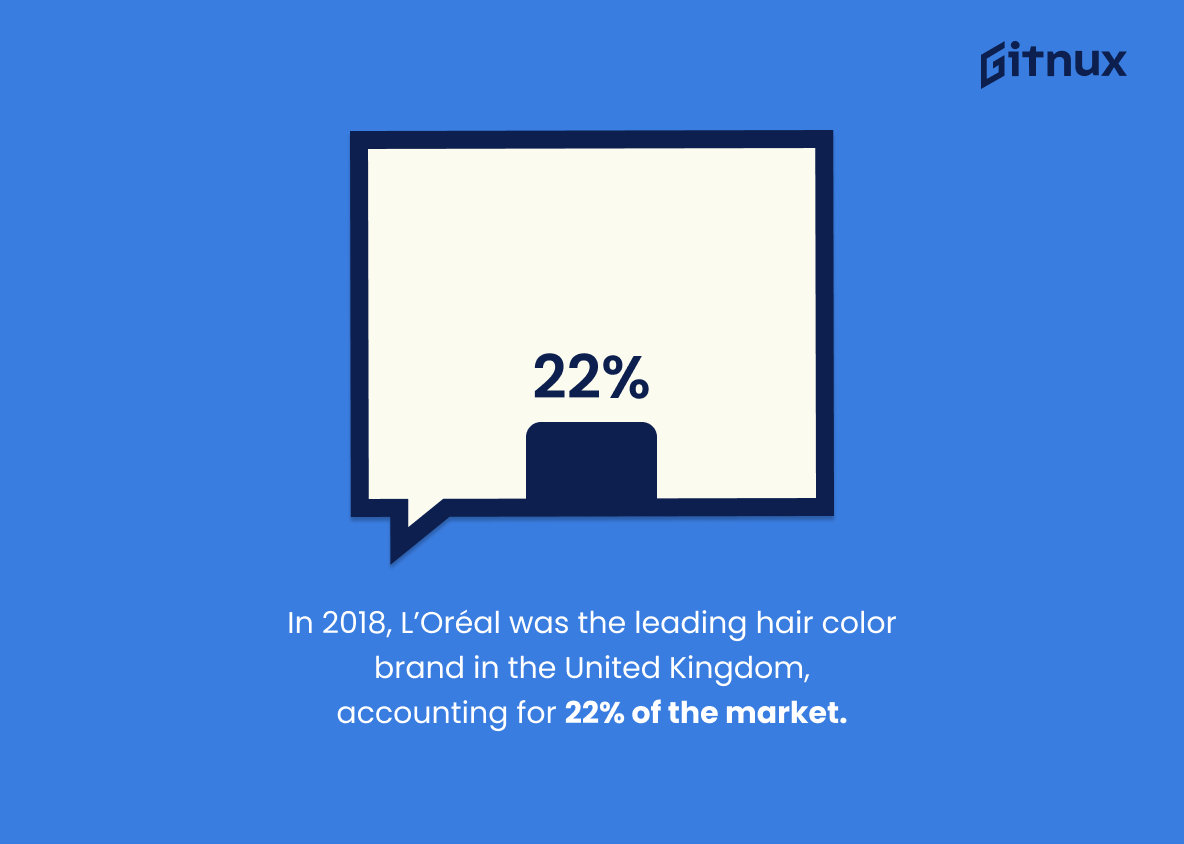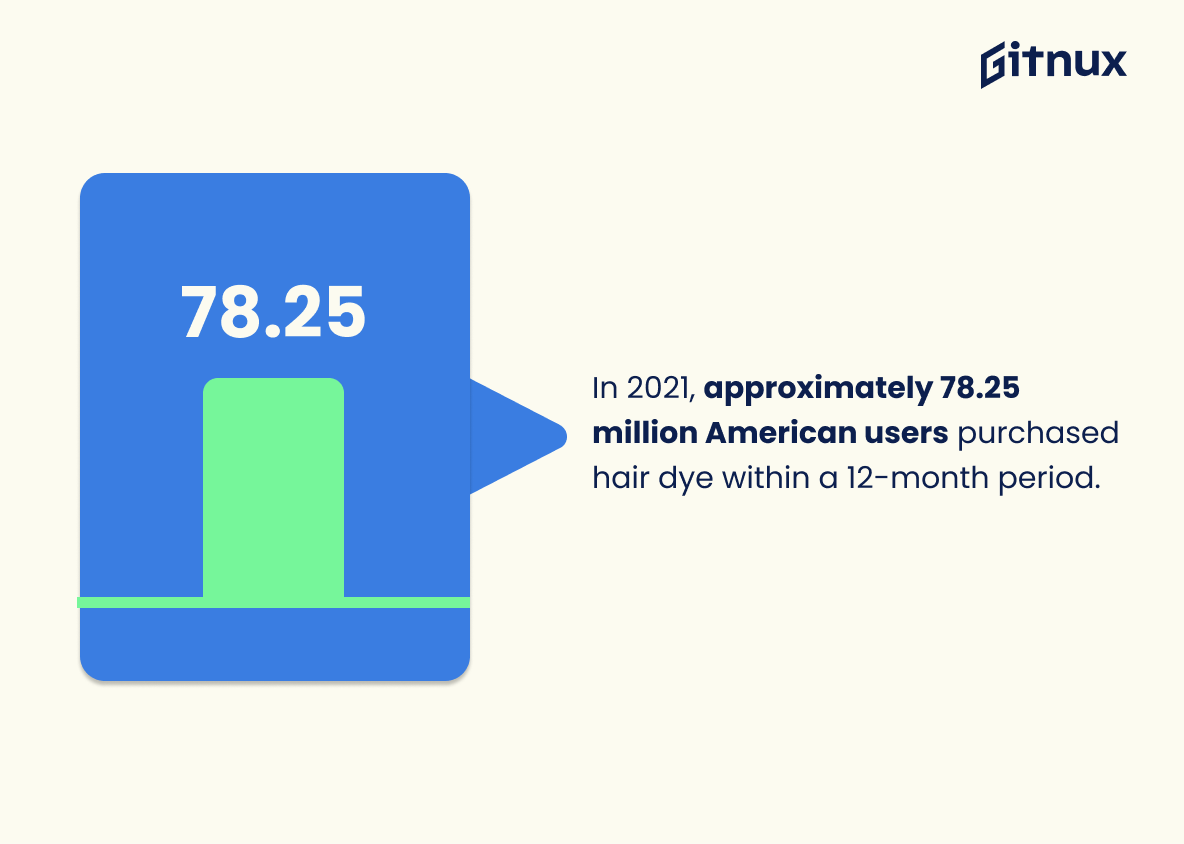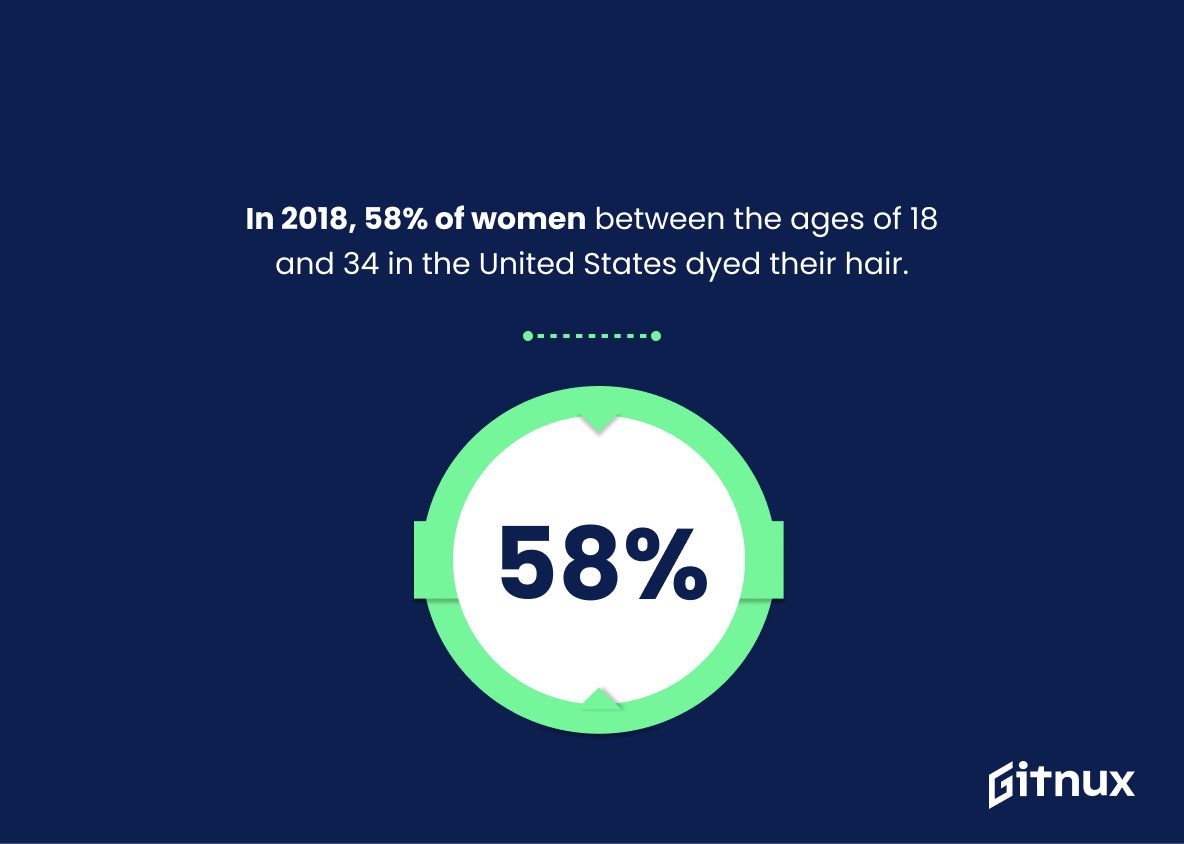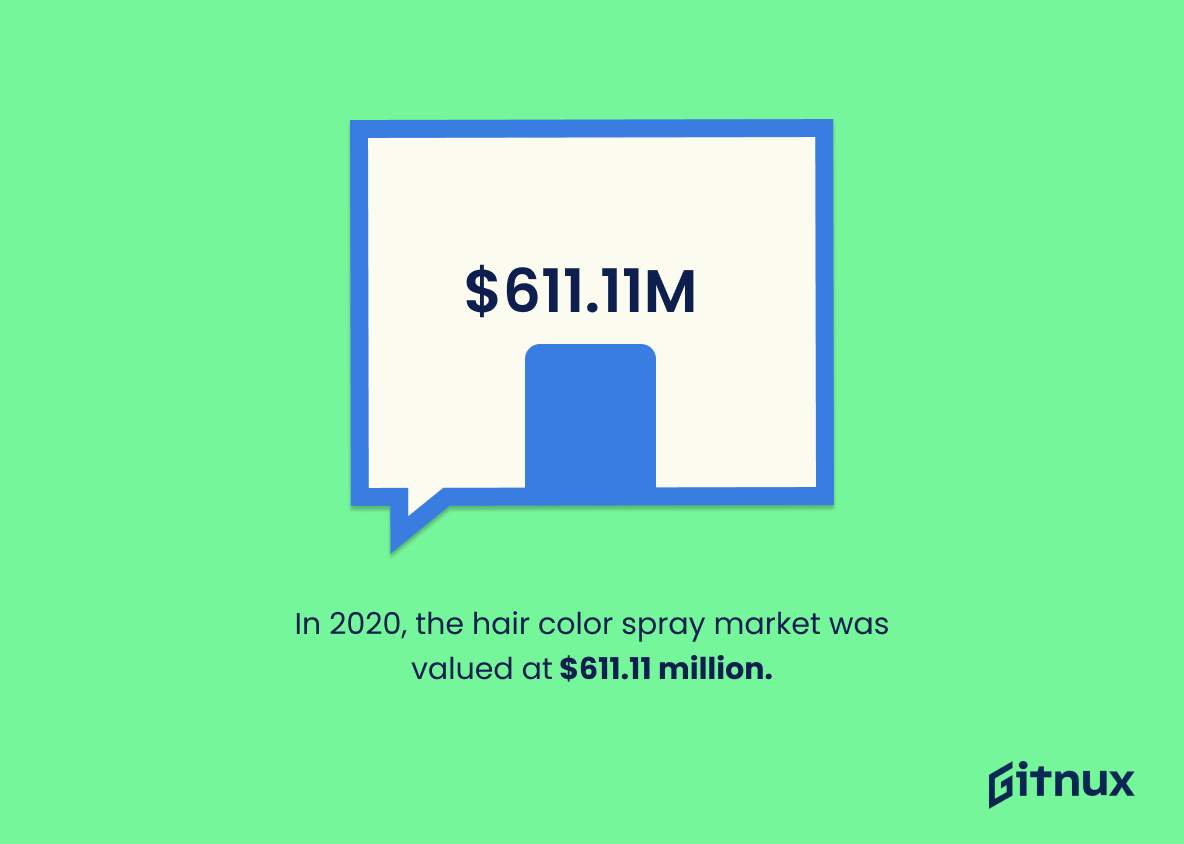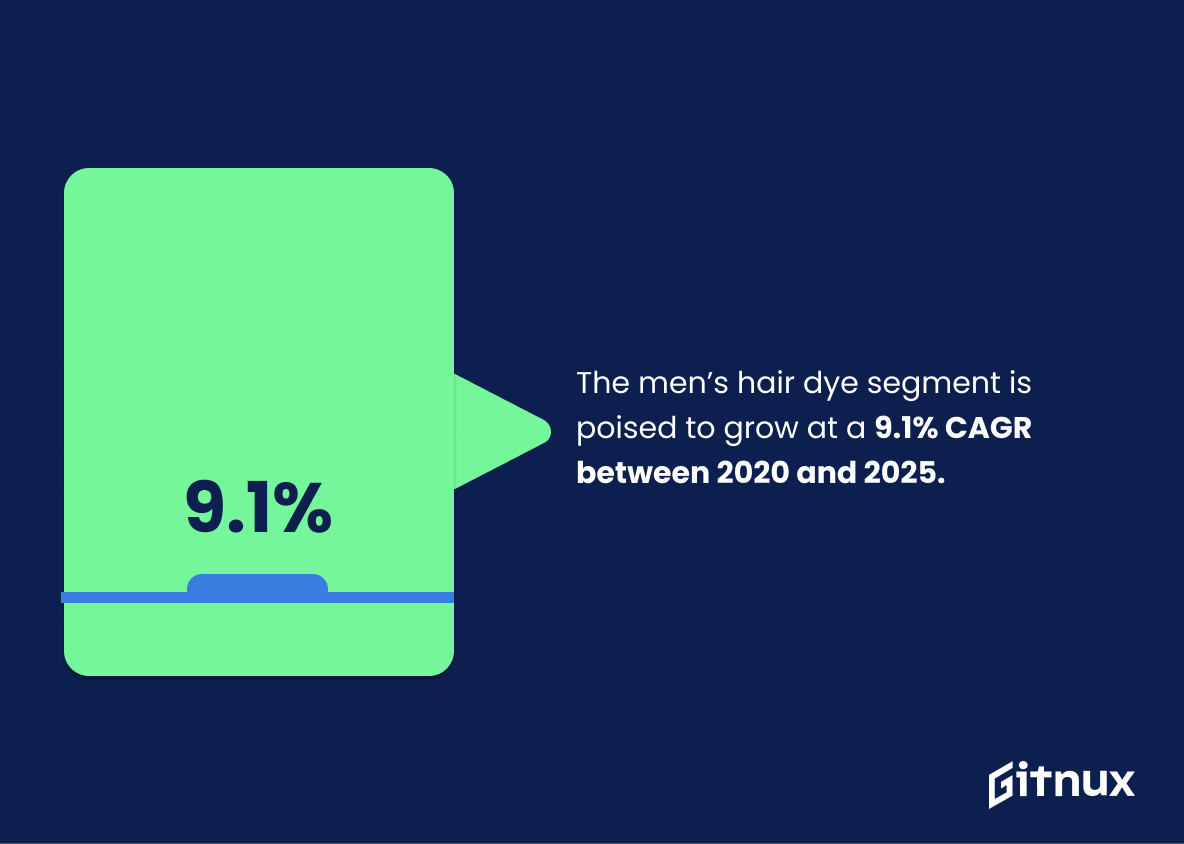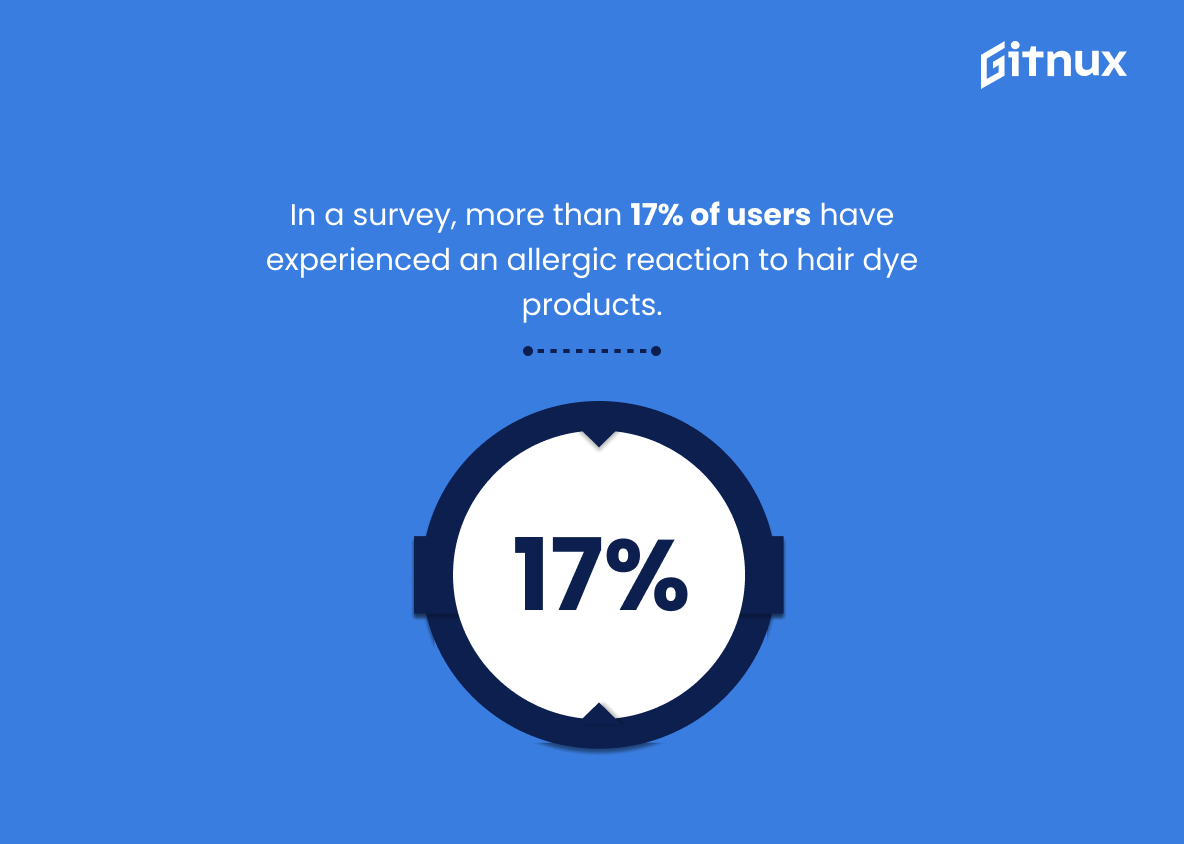Hair dye, a beloved beauty product, is used by millions globally. Despite its popularity, statistics about hair dye aren’t readily available. To shed some light on this, we’ve collected data from dependable sources about market size, growth trends, top brands, and more, pertaining to hair coloring products. We’ll also touch upon potential health risks linked with their use. This will equip readers with valuable insights into this subject matter.
Hair Dye Statistics Overview
The global hair color market is expected to expand at a compound annual growth rate (CAGR) of 9.2% between 2021 and 2028.
This statistic is a testament to the increasing popularity of hair dyeing, as the global hair color market is projected to experience a significant growth rate over the next seven years. This indicates that more and more people are turning to hair dyeing as a way to express themselves and enhance their appearance. As such, this statistic is an important piece of information for anyone interested in learning more about the hair dyeing industry.
In 2018, L’Oréal was the leading hair color brand in the United Kingdom, accounting for 22% of the market.
This statistic is a testament to the success of L’Oréal in the UK hair color market. It demonstrates that the brand has been able to capture a significant portion of the market share, making it the leading hair color brand in the country. This information is important to include in a blog post about hair dye statistics, as it provides a clear indication of the current state of the market and the success of the leading brand.
An estimated 33% of women used semi-permanent hair color in the United States in 2021, making it the most popular type of hair dye.
This statistic is a testament to the fact that semi-permanent hair color is the go-to choice for many women in the United States. It speaks to the popularity of this type of hair dye and the trust that women have in it to provide them with the desired results. This statistic is an important piece of information for anyone looking to learn more about hair dye trends in the US.
In 2021, approximately 78.25 million American users purchased hair dye within a 12-month period.
This statistic is a testament to the fact that hair dye is a popular product among American users. It shows that millions of people are taking the time to dye their hair, indicating that hair dye is an important part of many people’s beauty routines. This statistic is an important piece of information for anyone writing a blog post about hair dye statistics, as it provides a clear indication of the prevalence of hair dye in the United States.
In 2018, 58% of women between the ages of 18 and 34 in the United States dyed their hair.
This statistic is significant in the context of a blog post about Hair Dye Statistics because it reveals the prevalence of hair dyeing among young women in the United States. It provides a snapshot of the current trends in hair dyeing and can be used to inform further research into the topic.
In the United Kingdom, spending on hair dye reached £321 million in 2019.
This statistic is a testament to the fact that hair dye is a popular and lucrative industry in the United Kingdom. It shows that people are willing to invest in their hair, and that the hair dye market is thriving. This statistic is an important indicator of the health of the hair dye industry in the UK, and is an important piece of information for anyone interested in the hair dye market.
In 2020, the hair color spray market was valued at $611.11 million.
This statistic is a testament to the immense popularity of hair color spray, demonstrating that it is a highly sought-after product in the beauty industry. It is a clear indication that hair dye is a booming business, and that people are willing to invest in products that can help them achieve their desired look. This statistic is an important piece of information for anyone looking to learn more about the hair dye market.
In 2020, the natural hair dye segment accounted for 9.7% of the global hair dye market.
This statistic is a telling indication of the growing popularity of natural hair dye products. It shows that more and more people are turning to natural alternatives to traditional hair dye, which is a positive sign for the health of our hair and the environment.
The men’s hair dye segment is poised to grow at a 9.1% CAGR between 2020 and 2025.
This statistic is a valuable insight into the future of the men’s hair dye segment, indicating that it is likely to experience a significant growth in the coming years. This is an important piece of information for anyone interested in the hair dye industry, as it provides an indication of the potential opportunities that may arise in the near future.
In a survey, more than 17% of users have experienced an allergic reaction to hair dye products.
This statistic is a stark reminder of the potential risks associated with hair dye products. It serves as a warning to those considering using them, and highlights the importance of researching the ingredients and potential side effects before making a purchase.
Hairdressers and hairstylists are 50 times more likely to deal with severe allergic reactions due to hair dye exposure.
This statistic is a stark reminder of the potential risks associated with hair dye exposure. It highlights the importance of taking the necessary precautions when using hair dye, such as wearing protective gloves and using a patch test before applying the dye to the hair. It also serves as a warning to hairdressers and hairstylists to be extra vigilant when dealing with hair dye, as they are at a much higher risk of suffering from severe allergic reactions.
Conclusion
The data presented in this blog post provides a comprehensive overview of the hair dye market and its associated trends. It is clear that hair coloring has become increasingly popular among women, with over 75% of American women using it to change their appearance. Additionally, the global hair color market is expected to expand at a compound annual growth rate (CAGR) of 9.2%, while L’Oréal was found to be the leading brand in the United Kingdom in 2018. Furthermore, semi-permanent dyes are currently most popular type used by consumers and spending on these products reached £321 million in 2019 alone. Finally, there have been reports of allergic reactions due to exposure to certain ingredients such as para-phenylenediamine (PPD).
Overall, this blog post highlights some key statistics related to hair dye usage and industry trends which can help inform decisions about purchasing or using these products safely for personal use or business purposes alike.
References
0. – https://www.ncbi.nlm.nih.gov
1. – https://www.mordorintelligence.com
2. – https://www.statisticbrain.com
3. – https://www.statista.com
4. – https://www.pubmed.ncbi.nlm.nih.gov
5. – https://www.grandviewresearch.com
6. – https://www.prnewswire.com

